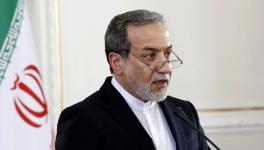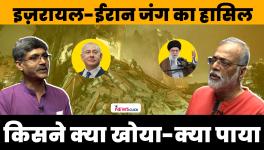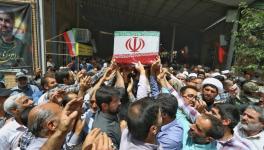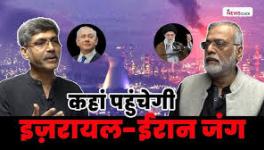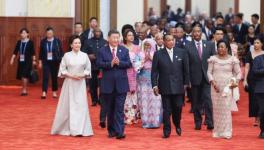A Liberal’s Dilemma: How Shashi Tharoor is Wrong About Indo-US Relations

Image Courtesy: Flickr
In a recent opinion piece for The New Indian Express, Shashi Tharoor—an accomplished author, diplomat, and prominent voice in Indian liberal politics—shared his thoughts on the changing dynamics of Indo-US relationship during the Donald Trump era. He suggested that the current turbulence in bilateral ties was just a temporary phase, not a lasting setback.
The geopolitical concerns of Tharoor are valid from a certain perspective. But the article and the ideas he articulates have certain flaws, both historically and geopolitically. Tharoor believes President Trump’s unconventional approach can and should be adjusted, paving the way for returning to the “warm, strategic partnership” that characterised previous decades. This notion is certainly comforting, especially for those who see the US-India relationship as a crucial part and parcel of our diplomatic structure.
‘America First’ is Not a Phase—It's a Symptom
Viewing Trump’s policies as just a temporary detour misses the larger shifts happening in the US. The rise of protectionism, economic nationalism, and unilateralism isn’t merely the whim of one controversial leader; it reflects a deeper crisis within the American economic and political landscape.
The 2008 global financial crisis didn’t just hit people’s wallets; it shattered the ‘American dream’. As jobs were outsourced and social inequality grew, frustration turned inward. Trump wasn’t the cause of this situation; he was the result. The US, still reeling from its extensive military engagements in Iraq and Afghanistan, found itself economically drained and politically divided. The outcome? A withdrawal from global responsibilities and a rallying cry of “America First.” Trump’s aggressive trade wars and his attacks on multilateral agreements are not just isolated incidents; they signify a broader shift in American policy.
As an expert in foreign policy, Tharoor must have heard the quote that there are “no permanent friends or enemies but only permanent interests.” In the present scenario, the US’s interest lies in protectionism and nationalism. Instead of planting “liberal democracies”, the US will now create a façade of a grand old mogul or godfather who validates its existence by being patronised by others.
The foreign policy syllabi of the US were always about being the patron or the boss. The only difference between Trump and his contemporary predecessors is the tone and tactics of pushing the throttle. Liberals must always remember the quote of the late Tanzanian Prime Minister Julius Nyerere. “The United States is also a one-party state, but with typical American extravagance, they have two of them.”
The evil US diplomatic hitman, Henry Kissinger, himself admitted that being a friend of US can be fatal for any country. With the advent of a unipolar world, both the US and India converged their attention to Asia and the Indian Ocean. India was cautious on its priorities, with a third eye always open against imperial power. History proves that US is an untrustworthy ally for Asian countries.
Tharoor’s Disappointments
According to Tharoor, Trump did India a disservice by “internationalising” the Kashmir issue. That critique is valid on the surface. Trump’s casual offer to mediate on Kashmir was tone-deaf and diplomatically intrusive. But is it historically uncharacteristic of the US? Not at all. The US has never been neutral on Kashmir. During the Cold War, it tilted toward Pakistan for strategic reasons—military bases, access to Afghanistan, and a foothold in the Islamic world. After the Cold War, while the volume was lowered, the intent remained. The US has consistently seen Kashmir through the lens of its own regional interests. Any silence it has maintained on the issue wasn’t a sign of friendship with India—it was strategic ambiguity.
His other disappointments include;
1. Trump’s equalising of India and Pakistan as two conflicting forces, while in reality, Pakistan pulled the trigger first.
2. Offered Pakistan a negotiating framework that was not earned
3. Re-hyphenated India and Pakistan in the global imagination
All these disappointments were bound to happen. In reality, the US has returned to its historical position, and Trump will not hold back from explicitly stating things that his predecessors withheld.
US Double Standards on Counter-Terrorism.
India was one of the first countries to declare that terrorism is a global phenomenon that has no religion. It is noteworthy that the US, being the brain behind the creation of terrorism in Asia, Africa, and Latin America, hesitated to endorse this statement at the initial stage. It was only after the globalisation of terrorism, when the Frankenstein attacked the twin towers, US had its awakening.
The resolution of counter-terrorism that was proclaimed in the aftermath of these events was hampered again by the US interest. A close dissection of world history is sufficient to fragmentise a liberal’s notion that the US is honestly countering terrorism. Undoubtedly, US’s commitment to counter-terrorism constitutes not even a minuscule part of India’s commitment to combat terrorism of every variety.
Despite publicly condemning terrorism, the US funneled billions of dollars to Pakistan even as the latter harboured groups responsible for attacks on India, including the 2001 Indian Parliament attack and the 2008 Mumbai carnage. Terrorism was negotiable, as long as it didn’t directly target American soil.
The US invaded Afghanistan in 2001 to crush the Taliban and seek revenge for 9/11. Yet, 20 years later, it sat down with them at the negotiating table in Doha. Washington knew about the Taliban's human rights violations and connections to terrorism. Still, it gave them diplomatic recognition to smooth their way out. This left Afghan women's civil society and champions of democracy high and dry.
Recently, Trump’s foreign office has completely endorsed the Hay'at Tahrir al-Sham or HTS-led dispensation of Syria, whose new President Ahmed al-Sharaa, was earlier known as Jolani, a “moderate jihadi”. He has instrumentalised US funds and support to suppress minorities. The roots of ISIS and HTS, and other terrorist forces lie within the brains serving the military military-industrial complex of the US at the Pentagon. It must be noted that the International Monetary Fund aid to Pakistan was not interspersed by the US in favour of India.
Trusting the US in combating terrorism will be ruinous, as you must remember, Abraham never sacrificed Isaac. In the final moment, the military-industrial complex will resonate the stop sign without fail. Every patriotic Indian must remember that in February 2025, the US released $379 million to Pakistan for replenishing F-16 jets, which were used against India during the recent attack.
Elephant or Dragon: Containing Whom?
Of course, India is imperative for the US-led Global North to contain and constrain China. The illustrious legacy of India, stretching from its first Prime Minister Jawaharlal Nehru, is the plinth for all palatial projections of our country in the global forums. QUAD, aka Quadrilateral Alliance, a brainchild of former Japanese Prime Minister, late Shinzo Abe, later rejuvenated by the US, was expected to contain China effectively. But as economist Rafique Dossani noted in his article, “… While the Quad may succeed in generating diplomatic attention, its tangible impact on Southeast Asia remains minimal.”
So, the question is, who is being contained? China or India? In the guise of counter-balancing against China, the US and its bona fide partners are obsoleting India and its aspirations. Reducing India to a mere shield against China caters only to Western interests.
Washington always favours unilateral trade relationships, while India’s trump cards in geopolitics are multilateralism and multi-alignment. Trade relations between India and the US appear superlative in the figures and schematic from a geo-economic perspective. It is a well-established fact that the sole target of Washington is to place India as a catalyst against China.
A close perusal of import-export data shows that the Indian manufacturing sector has not benefited as exports from India are confined to a creamy layer of commodities. The US has failed to decouple itself from China or to promote India. India, on the other hand, has coupled intensively with Russia and China, which has disappointed the US.
Washington’s attempt to demote India as its vassal state has a prolonged history. It can be noted that there are certain fissures in Indo-US relations. Cancellation of GSP (Generalised System of Preferences) in 2019, continuing reluctance to exchange, delay the transfer of tech for Tejas Mk-2, and finally, the tariffs, must not be taken lightly.
To conclude, India is under the threat of being contained and vassalised. The current rupture is not temporary, rather it’s a product of various economic and geo-economic phenomena, which will get worse in the coming days.
The writer is an independent researcher in international relations. The views are personal.
Get the latest reports & analysis with people's perspective on Protests, movements & deep analytical videos, discussions of the current affairs in your Telegram app. Subscribe to NewsClick's Telegram channel & get Real-Time updates on stories, as they get published on our website.









